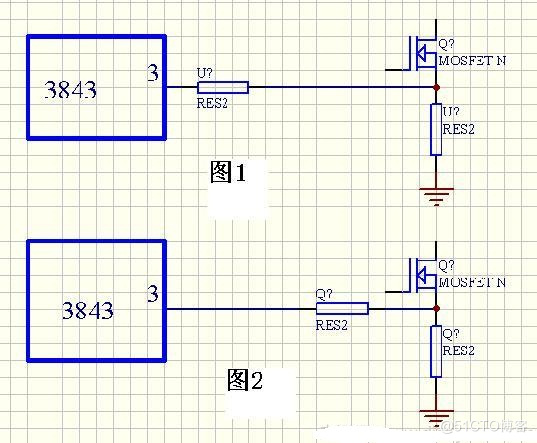当前位置:网站首页>MySQL syntax collation (5) -- functions, stored procedures and triggers
MySQL syntax collation (5) -- functions, stored procedures and triggers
2022-04-23 19:19:00 【It's quite bald, Qi Qi】
This chapter explains functions , Creation and basic use of stored procedures and triggers .
MySQL The function of is used to realize certain functions , Limited by the fact that the return parameter can only be a single , The functions realized are relatively limited .
/* A function that returns a single query value ,MySQL Only this function can be used
Given the name of a department , Number of teachers returning to the Department */
USE university;
SET GLOBAL log_bin_trust_function_creators = 1; -- Master slave replication is not enabled
DELIMITER // -- Set the end symbol of the command segment to //
CREATE FUNCTION dept_count( dept_name VARCHAR(20)) -- The parameters of the function
RETURNS INT /* return type */
BEGIN
DECLARE d_count INT; /* Declare parameters and their types */
SELECT COUNT(*)
FROM instructor
WHERE instructor.dept_name = dept_name
INTO d_count; /* Assign parameters */
RETURN d_count; /* A function that returns a single query value ,MySQL Only this function can be used */
END;//
DELIMITER ;
/* Call function */
SELECT dept_count('Comp. Sci.');
-- This is another way , Load the result of the function into @ss in
SELECT dept_count('Comp. Sci.') INTO @ss;
SELECT @ss
/* Here is an operation to put table records into a function
The number of returned teachers is greater than 1 Name and budget of all departments */
SELECT dept_name,budget
FROM department
WHERE dept_count(department.`dept_name`) > 1;
We were just writing a function , Mentioned the definition of variables , Next, let's talk about the definition of variables .declare: Defining local variables .set: Assign a value to a variable .
/*declare Statement is used to define local variables , have access to default To describe the default values , Its role
The field is limited to this statement block , Commonly used in functions 、 In a stored procedure or trigger .*/
DECLARE age INT DEFAULT 0; -- Direct execution will report an error
SET age = 18;
/*mysql User variables ,mysql User variables in do not need to be declared in advance , Direct use “@ Variable name ” Use
That's all right. , Its scope is the current connection .*/
SET @age=19;
/* Global variables affect the overall operation of the server . When the service starts , It initializes all global variables to
The default value is . To change global variables , Must possess super jurisdiction [email protected]@ Represents a global variable .*/
SET GLOBAL SQL_WARNINGS = ON; -- global Don't omit
-- Or another way of writing
SET @@global.sql_warnings = OFF -- This variable exists once the machine is started
delimiter: Redefine the Terminator .
/* Redefine command end symbol
SQL The default terminator is a semicolon ;*/
DELIMITER // -- Set the end symbol of the command segment to //
DELIMITER ; -- Finally, remember to wrap the terminator back ;
And then again MySQL Common functions .
String function : CONCAT(), LOWER(),UPPER(),LEFT(),TRIM(),REPEAT()
Numerical function : ABS(),CEIL(),FLOOR(),MOD(),RAND()
Date time function : CURDATE(),NOW(),YEAR()
System variables : DATABASE(),VERSION(),USER() ,MD5()
Next we're going to MySQL Stored procedures in , In fact, stored procedures are similar to functions , Let's talk about the difference between the two first .
One 、 Meaning is different
1、 stored procedure : The stored procedure is SQL Statement and optional control flow statement , Store under a name and process as a unit .
2、 function : By one or more SQL A subroutine consisting of statements , Can be used to encapsulate code for reuse . There are a lot of function restrictions , If you can't use a temporary table , You can only use table variables, etc
Two 、 Different conditions of use
1、 stored procedure : A series of can be executed in a single stored procedure SQL sentence . And you can reference other stored procedures from your own stored procedures , This can simplify a series of complex statements .
2、 function : Custom functions have many limitations , There are many statements that cannot be used , Many functions cannot be realized . Function can directly reference the return value , Use table variables to return recordsets . however , User defined functions cannot be used to perform a set of operations that modify the state of a global database .
3、 ... and 、 Different execution methods
1、 stored procedure : Stored procedures can return parameters , Such as recordset , Functions can only return values or table objects . The parameters of the stored procedure are in,out,inout Three , The return type is not required when the stored procedure is declared .
2、 function : Function parameters only have in, The function needs to describe the return type , And the function must contain a valid return sentence .
After understanding the stored procedure , We probably know , Functions can only perform simple operations , The stored procedure can complete the operation of multiple tables .
/* Given the name of a department , Number of teachers returning to the Department .*/
DROP PROCEDURE IF EXISTS dept_count_p;
DELIMITER //
CREATE PROCEDURE dept_count_p(IN dept_name VARCHAR(20),OUT d_count INT )
/*IN Represents the input parameter ,OUT Parameters representing the output , The output parameter name is d_count*/
BEGIN
SELECT COUNT(*) INTO d_count
FROM instructor
WHERE instructor.dept_name=dept_name ;
END;//
DELIMITER ;
/* Call the stored procedure directly : Execute stored procedures on the database server side */
CALL dept_count_p('Comp. Sci.',@d_count); -- The output value after calling is d_count, Reference to be added @
SELECT @d_count
/* Calling stored procedure in middle note function */
DELIMITER //
CREATE FUNCTION test(dept_name VARCHAR(20)) RETURNS VARCHAR(100)
BEGIN
CALL dept_count_p(dept_name,@d_number); -- Calling stored procedure
IF @d_number >= 1 THEN
RETURN CONCAT('the number of this department teacher is: ',
CAST(@d_number AS CHAR)); -- Connect two strings
ELSE
RETURN 'this department teacher is 0';
END IF;
END;//
DELIMITER ;
/* Call function */
SELECT test('Music');
Stored procedures can operate on multiple tables , You can also use T-SQL Language ( Be similar to python) Implement some functions
/* use T-SQL Language completion 1+2+3……+n, And print out the results */
DELIMITER //
CREATE PROCEDURE MY_Sum(IN n INT, OUT result INT)
BEGIN
DECLARE i INT DEFAULT 1;
DECLARE SUM INT DEFAULT 0;
WHILE i <= n DO
SET SUM = SUM + i; -- The assignment of each variable should use set
SET i = i + 1;
END WHILE;
SET result = SUM;
END;//
DELIMITER ;
/* Calling stored procedure */
CALL my_sum(50,@result);
SELECT @result;
/* Stored procedure compared to function , The biggest difference is that it cannot be called by others , And functions can .
Generally, functions are used to realize a single function , Then use the storage structure to realize a section of business logic ( To sign up , Shift fee , Order warehousing )*/
trigger : It can be understood as a program that is executed after certain operations are performed , For example, when modifying the data of a table , I can create a trigger to record the modified data into another table .
Trigger involves multiple parameters :

- about INSERT sentence , Only NEW It's legal.
- about DELETE sentence , Only OLD It's legal
- about UPDATE sentence ,NEW、OLD Can be used at the same time
/* Create two experiment tables for the trigger */
USE university;
CREATE TABLE test1(id VARCHAR(5)PRIMARY KEY ); -- Create table
CREATE TABLE test2(id VARCHAR(5)PRIMARY KEY ); -- Create table
/* Create trigger tr1, The trigger event is INSERT, The function is to record tr1 Newly added id*/
DELIMITER // -- Set the end symbol of the command segment to //, If you don't add this, you may report an error
CREATE TRIGGER tr1
AFTER INSERT ON student -- The trigger time is inserted student After the table
FOR EACH ROW -- mysql Statement triggers are not supported , So you have to write foreachrow
BEGIN
INSERT INTO test1 VALUES(New.ID); -- The newly recorded id Value insertion test1 surface
END;//
/* Create trigger tr2, The trigger event is update*/
DELIMITER //
CREATE TRIGGER tr2
AFTER UPDATE ON student -- The trigger time is updated student After the table
FOR EACH ROW
BEGIN
INSERT INTO test2 VALUES(OLD.ID); -- The previous... Will be modified id Value insertion test2 surface
END;//
DELIMITER ;
-- Test triggers tr1
INSERT INTO student VALUES('s0001','Jack','Music',NULL);
-- Test triggers tr2
UPDATE student SET NAME='Mary' WHERE id='s0001';
/* Set a trigger tr3, Enables the detection of new inputs section surface time_slot_id Must already exist , otherwise
Just report a mistake */
DELIMITER //
CREATE TRIGGER tr3
BEFORE INSERT ON section -- The operation time here is before, That is, before insertion
FOR EACH ROW
BEGIN
DECLARE P_CNT INT;
SELECT COUNT(*) INTO P_CNT
FROM time_slot
WHERE time_slot_id = NEW.time_slot_id;
-- Condition not satisfied , Can't be in section Insert records in the table , New records need to be processed
IF (P_CNT <= 0) THEN
SET new.time_slot_id=''; -- Set to null
-- Deliberately execute the wrong statement , Let the system report an error , Automatically roll back new records
INSERT INTO xxxx VALUES (1);
END IF;
END; //
DELIMITER ;
Next, test trigger three
-- First look at the original table
SELECT * FROM section;
-- Insert an error record
INSERT INTO section VALUES ('CS-321', '2', 'Spring', '2014', 'Taylor', '3128', 'J');
-- The record is not inserted after an error is found
SELECT *
FROM section
WHERE course_id='CS-321';
版权声明
本文为[It's quite bald, Qi Qi]所创,转载请带上原文链接,感谢
https://yzsam.com/2022/04/202204210600172110.html
边栏推荐
- Partage de la conception de l'alimentation électrique de commutation et illustration des compétences en conception de l'alimentation électrique
- Openlayers 5.0 discrete aggregation points
- Encyclopedia of professional terms and abbreviations in communication engineering
- How about CICC wealth? Is it safe to open an account up there
- 剑指 Offer II 116. 省份数量-空间复杂度O(n),时间复杂度O(n)
- Quick start to static class variables
- 优先使用组合而不使用继承
- SQL Server database in clause and exists clause conversion
- JS calculation time difference
- 浅谈c语言指针的强制转换
猜你喜欢

Partage de la conception de l'alimentation électrique de commutation et illustration des compétences en conception de l'alimentation électrique

Installation, use and problem summary of binlog2sql tool

Android Development: the client obtains the latest value in the database in real time and displays it on the interface
![[记录]TypeError: this.getOptions is not a function](/img/c9/0d92891b6beec3d6085bd3da516f00.png)
[记录]TypeError: this.getOptions is not a function

Using oes texture + glsurfaceview + JNI to realize player picture processing based on OpenGL es

RuntimeError: Providing a bool or integral fill value without setting the optional `dtype` or `out`

优先使用组合而不使用继承

Prefer composition to inheritance

開關電源設計分享及電源設計技巧圖解
![[report] Microsoft: application of deep learning methods in speech enhancement](/img/29/2d2addd826359fdb0920e06ebedd29.png)
[report] Microsoft: application of deep learning methods in speech enhancement
随机推荐
Switching power supply design sharing and power supply design skills diagram
One stop service platform for high-level talents and development of comprehensive service platform system for talents
What is a message queue
Quick start to static class variables
Raspberry pie uses root operation, and the graphical interface uses its own file manager
openlayers 5.0 热力图
OpenHarmony开源开发者成长计划,寻找改变世界的开源新生力!
Openlayers 5.0 two centering methods
HTTP cache - HTTP authoritative guide Chapter VII
Xlslib use
How about CICC wealth? Is it safe to open an account up there
Reflection on the performance of some OpenGL operations in the past
SSDB foundation 2
SSDB Foundation
Encyclopedia of professional terms and abbreviations in communication engineering
The flyer realizes page Jump through routing routes
什么是消息队列
[play with lighthouse] Tencent cloud lightweight server builds a full platform video analysis video download website
SSDB基础3
Tencent cloud GPU best practices - remote development training using jupyter pycharm